

Vegetation
Grasslands
Native prairie is generally divided into three main categories; tallgrass, mixed-grass, and shortgrass. Each of these prairie communities is comprised of a unique blend of grasses and forbs. North Dakota has all three grassland types though tallgrass prairie exists only in remnants of once vast acreage.
Tallgrass Prairie
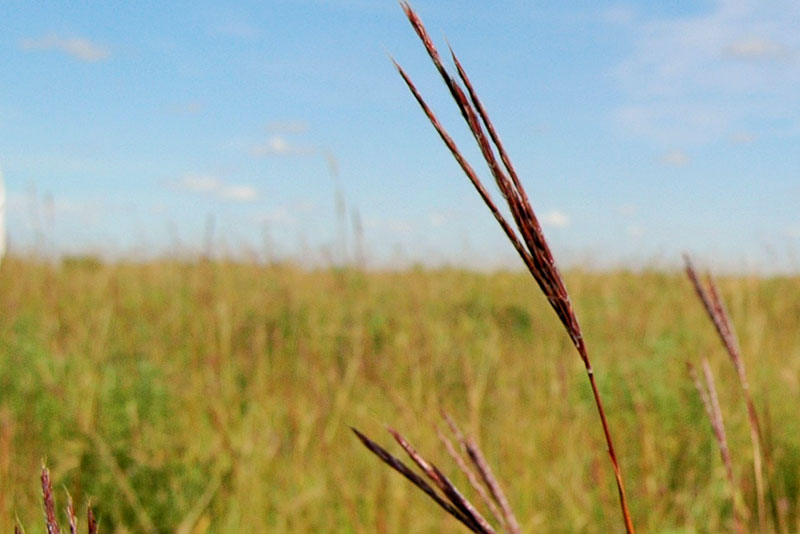
Tallgrass prairie can include more than 200 plant species. The most common and dominant of these are big bluestem, switchgrass, indiangrass, and prairie dropseed. Other associated grasses include little bluestem, slender wheatgrass, porcupine grass, mat muhly, fescue sedge, and meadow sedge. Some common forbs include blue-eyed grass, meadow anemone, prairie cinquefoil, wild licorice, prairie blazing star, tall goldenrod, black-eyed susan, white sage, and prairie-fringed orchid. Tallgrass prairie once covered much of the central United States and Canada. It is estimated only 3 percent of it remains unplowed. North Dakota’s remaining tallgrass prairie is found almost exclusively in the Red River Valley.
Mixed-grass Prairie
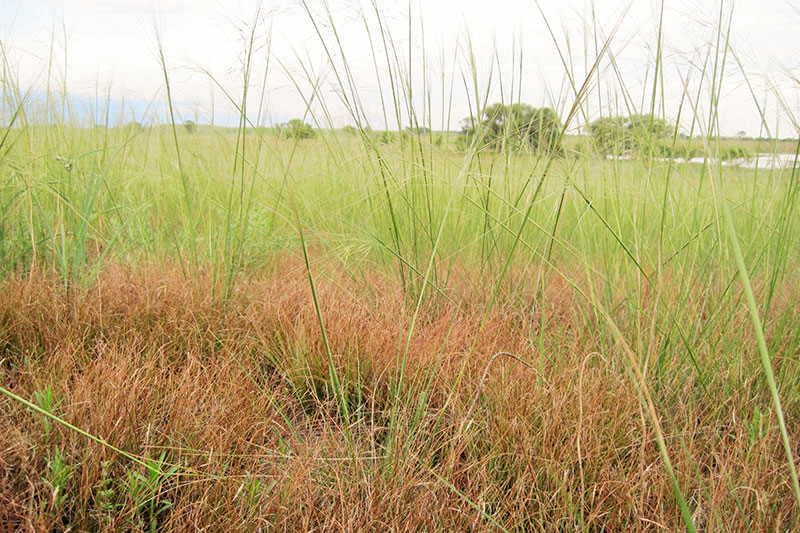
Mixed-grass prairie is a combination of tallgrass species found in eastern North Dakota and shortgrass species found farther west. It is dominated by warm and cool season grasses as well as sedges. Common grass species include prairie junegrass, Western wheatgrass, green needlegrass, needle-and-thread, blue grama, little bluestem, and needleleaf sedge. Other associated grasses include Canada wild-rye, spike oats, mat muhly, spikemoss, plains reedgrass, and buffalo grass.
Mixed-grass prairie is also known for a rich variety of forbs such as pasque flower, western wall-flower, prairie smoke, Missouri milkvetch, lead plant, Indian breadroot, purple prairie clover, gaura, harebell, narrowleaf blazing star, ball cactus, purple coneflower, yarrow, and several species of goldenrods.
Most of North Dakota is dominated by mixed-grass prairie. The mixed-grass prairie can be further divided into the eastern (including the Drift Prairie and Missouri Coteau regions) and the western (Missouri Slope region).
Shortgrass Prairie
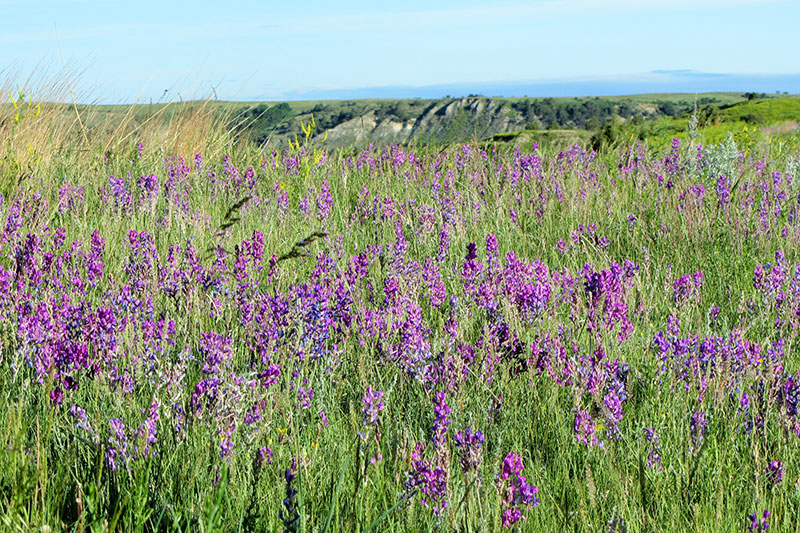
Found mostly in the elevated portions of the Missouri Slope region of North Dakota, this grassland habitat is dominated by warm season species that can survive on little rainfall. Grass species mature at 6 to 12 inches in height and include spikemoss, blue grama, needleleaf sedge, threadleaf sedge, buffalo grass, and needle-and-thread. Forbs include sandlily, white wild onion, death camas, buffalo-bean, purple loco, silverleaf, prickly pear, moss phloz, white beardtongue, and fringed sage.
Wetlands
A wetland is an area that is inundated or saturated by surface or groundwater long enough to support vegetation typically adapted for life in saturated soil. Wetlands are classified depending on how long water and vegetation are present. These range from temporary wetlands that typically hold water for only a few weeks, to permanent wetlands that hold water year round. North Dakota has about 2.4 million acres of wetlands remaining from an estimated 5 million that once existed. The highest wetland densities are in the Missouri Coteau and Drift Prairie, collectively known as the Prairie Potholes region. Wetland classifications vary slightly, but general definitions are as follows:
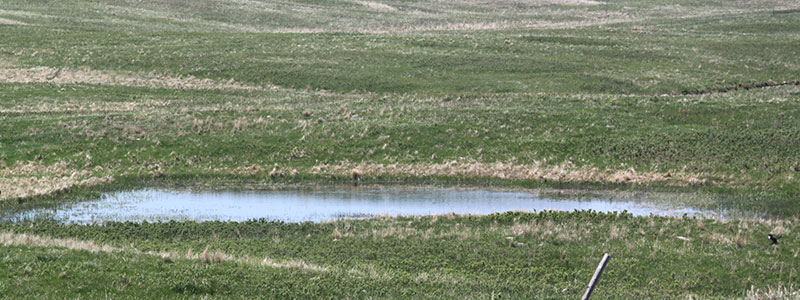
Temporary - Surface water present for a brief period during early spring following snowmelt and occasionally for several days following heavy rainstorms during the late spring, summer, and fall.
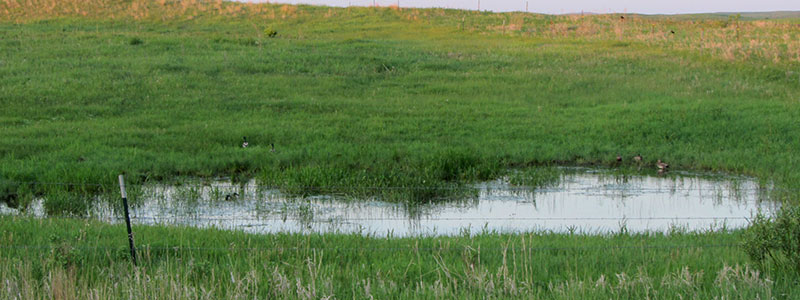
Seasonal - Surface water is present for extended periods in spring and early summer, but usually disappears during late summer and fall.

Semi-permanent - Surface water is present year-round in most years. During dry years, however, water may disappear as early as midsummer.
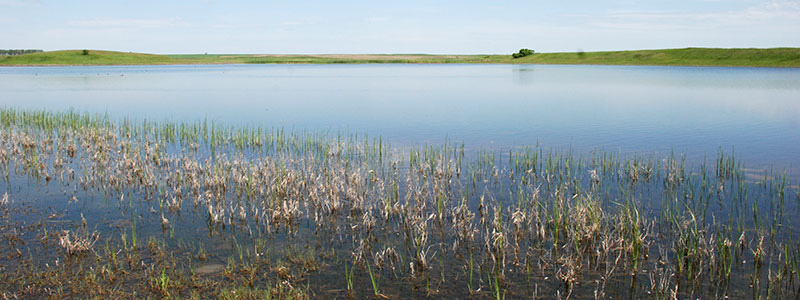
Permanent - Surface water is present throughout the year in all years.
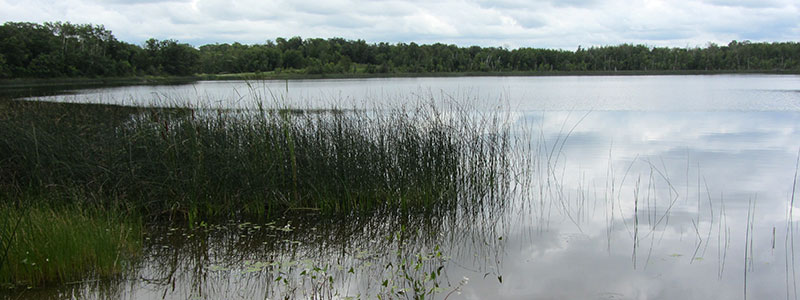
Permanent Wood-bordered - Deep surface water is present year-round and the wetland periphery is predominantly woodland.
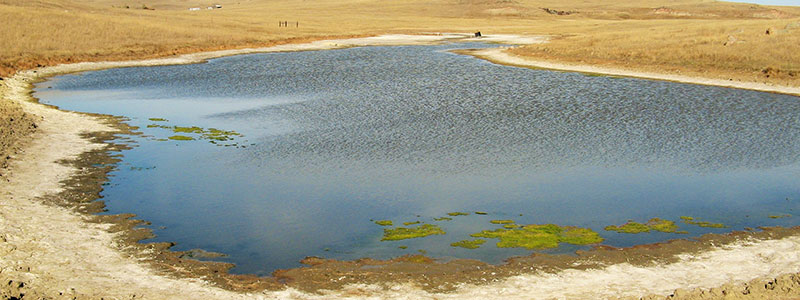
Alkali - Highly saline shallow water and alkali salt flats.

Farmed Wetlands - Occur in basins with soils that are frequently cultivated.
Fens - Surface water is sometimes lacking but bottom soils saturated by alkaline ground-water seepage.
Slope Wetlands - Occur primarily in southwest North Dakota.
Forest
Forested habitats are found in only a few locations in North Dakota, and they do not cover large contiguous areas. A majority of the forest habitat is found in riparian zones. The Turtle Mountains and northeastern North Dakota contain some of the largest stands of aspen and bur oak. Small areas of Ponderosa pine and juniper forests occur in the southwest.
Riparian

A riparian zone is the area between a body of water and the adjacent upland, identified by soil characteristics and distinctive vegetation that requires an excess of water. It includes wetlands and those portions of the floodplain that support riparian vegetation. Generally it is comprised of trees and shrubs as well as understory vegetation, including a variety of grasses and forbs, but may be naturally devoid of trees.
Eastern North Dakota riparian zones are dominated by green ash and elm trees where cottonwoods are prevalent in western zones of the state. Although this habitat type makes up a small area it is an important home to numerous wildlife species and is vital to stream health.
Aspen/Oak Forests
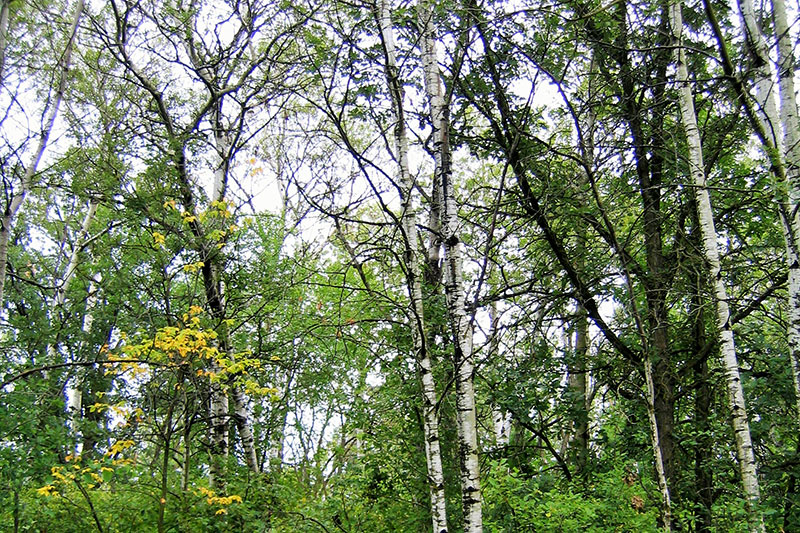
Aspen and oak make up 42 percent of North Dakota’s forested lands. Aspen is dominant in these forest stands but bur oak, balsam popular, box elder, green ash and paper birch are also present. Shrubs associated with this forest type are beaked hazel, highbush cranberry, Juneberry, chokecherry and raspberry. These stands are often found in association with lakes, wetlands, and grassy meadows.
Pine/Juniper Forests

This coniferous habitat is distributed throughout the North Dakota’s badlands. Juniper or cedar trees, although native, are encroaching into areas not historically found. There is a small native stand of Ponderosa pine and a small stand of limber pine is located in Slope County.
